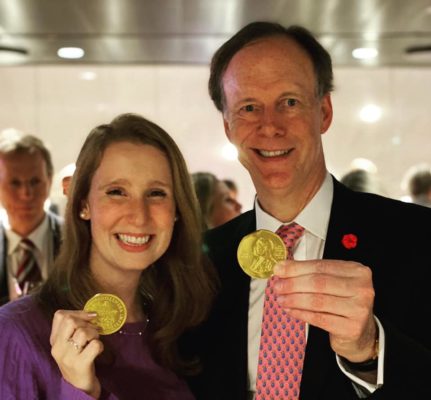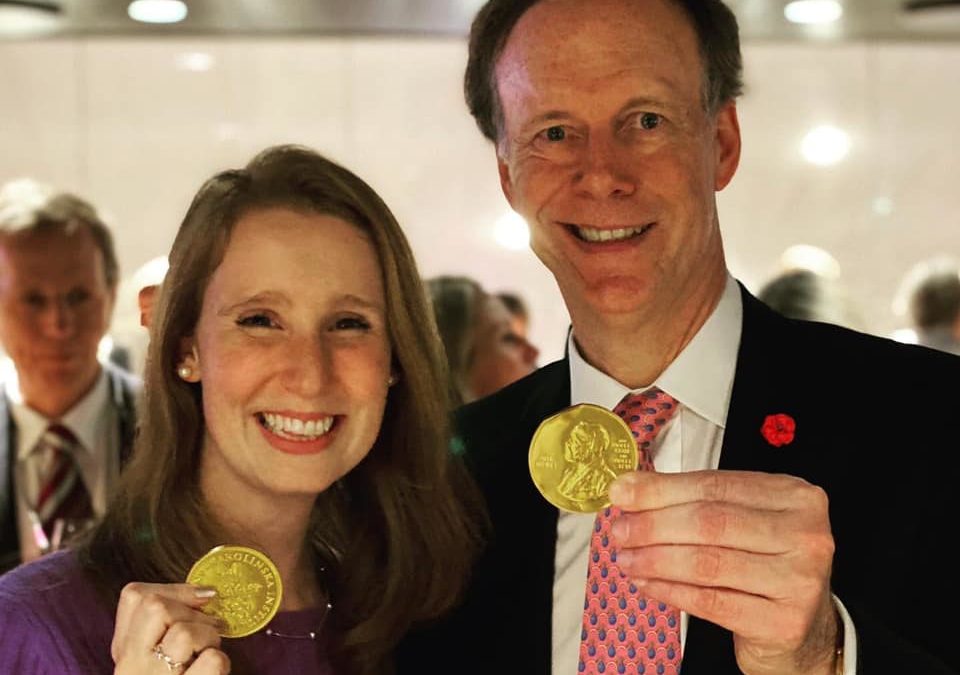It’s been a while since we’ve talked to some of our Science Cheerleaders. So we’re back with our Keeping Up with the SciCheers series with the latest from our Director of Recruitment Hilary!
Last time we spoke, you were still working on your PhD. Congrats on graduating! Tell us again about your studies.
 I graduated from Brown University with my PhD in Molecular Pharmacology and Physiology. While I was there, I became the coach for the cheer team! I also received the Joukowsky Prize for best dissertation in life sciences.
I graduated from Brown University with my PhD in Molecular Pharmacology and Physiology. While I was there, I became the coach for the cheer team! I also received the Joukowsky Prize for best dissertation in life sciences.
Wow, congrats! What did you do post-graduation?
After graduation, I started working at the Dana-Farber Cancer Institute/Harvard Medical School as a postdoctoral research fellow. I was awarded a three year fellowship from the National Cancer Institute to study a particular tumor suppressor protein, and how the loss of that protein changes the needs of cells. My long-term goal is still to help cancer patients, and I’m getting closer every day!
How close?
Well, I joined the Kaelin Lab, where I continued to work in cancer and started studying synthetic lethality as a way to find new cancer targets. There, I was awarded an F32 fellowship from the National Cancer Institute of the National Institutes of Health (NIH) to fund my work in applying synthetic lethality to cancer target identification and validation in kidney cancer. That grant funded my research that was published on the front page of Science Signaling.

Can you explain synthetic lethality and how it relates to the research are you working on?
My research was centered around exploiting a mutation in the way oxygen is carried to cells and use it against cancer cells, specifically kidney cancer, as a targeted treatment. In fact, six days after publishing my research, my mentor Bill Kaelin was awarded the 2019 Nobel Prize in Physiology or Medicine along with Gregg Semenza and Peter Ratcliffe for their discovery of how the body senses and adapts to changes in oxygen.

WAIT. Did you just say Nobel Prize? As in THE Nobel Prize? Tell us more!
Yes! I was invited to present at the Nobel Forum in Sweden during the Nobel Prize proceedings. I traveled to Sweden with my husband and we attended all of the parties, I mean meetings.
After these “meetings”, you surely returned. Now what?
In January 2020 I took a position as a Senior Scientist at Tango Therapeutics, which is a small biotech company that uses synthetic lethality to identify new targets for cancer therapy (and of which my former mentor Bill Kaelin is a founder).

When we first met, your advice to younger women was to keep exploring. You surely haven’t stopped exploring and making new discoveries. What advice would you give now?
Try lots of different things and follow the ones that make you the most excited. If you let your passion guide you, you’ll love your work and it will drive you towards success!

